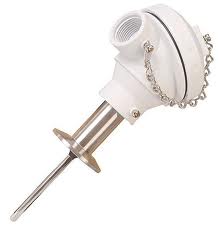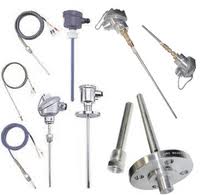What is an RTD?
Resistance Temperature Detectors also known as RTD’s, accurately sense temperature with an excellent degree of repeatability and interchangeability of elements. The RTD is composed of certain metallic elements whose change in resistance is a function of temperature. When heated, the resistance of the metal increases; when cooled, the resistance decreases. Passing current through an RTD generates a voltage across the RTD. By measuring this voltage, you determine its resistance and, thus, its temperature.
A platinum resistance temperature detector (RTD) is a device
with a typical resistance of 100 Ω at 0°C. It consists of a thin film of
platinum on a plastic film. Its resistance varies with temperature and it can
typically measure temperatures up to 850 °C. The relationship between
resistance and temperature is relatively linear as shown below for a sample 100
Ω RTD.
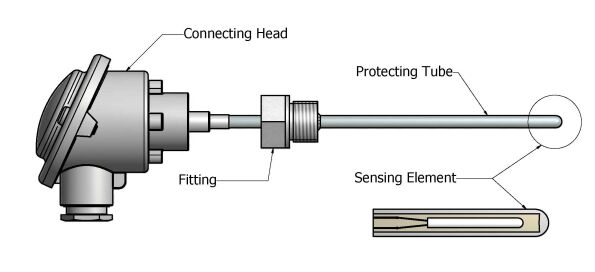 The RTD element is manufactured by winding a wire (wire wound elements) or plating a film (thin film elements) on a ceramic or glass core and sealing the element within a ceramic or glass capsule.
The RTD element is manufactured by winding a wire (wire wound elements) or plating a film (thin film elements) on a ceramic or glass core and sealing the element within a ceramic or glass capsule.
Since the majority of RTDs have low initial resistance, often 100 ohms, and have a small change in resistance per unit of temperature range, the resistance of the lead wire is often compensated for with a three or four wire bridge configuration built into the measuring devices. By selecting the proper elements and protective sheathing, RTDs can operate in a temperature range of (-200 to 650) °C [-328 to 1202] °F.
An RTD is a passive measurement device; therefore, you must supply it with an excitation current and then read the voltage across its terminals. You can then easily transform this reading to temperature with a simple algorithm. To avoid self-heating, which is caused by current flowing through the RTD, minimize this excitation current as much as possible. The easiest way to take a temperature reading with an RTD is using the 2-wire method.
Using the 2-wire method, the two wires that provide the RTD with its excitation
current and the two wires across which the RTD voltage is measured are the
same. The inaccuracy using this method is that if the lead resistance in the
wires is high, the voltage measured VO, is significantly higher than
the voltage that is present across the RTD itself. To get a more accurate
measurement, use the 4-wire method.
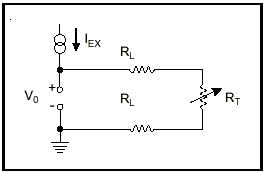
The 4-wire method has the advantage of not being affected by the lead
resistances because they are on a high impedance path going through the device
that is performing the voltage measurement; therefore, you get a much more
accurate measurement of the voltage across the RTD.
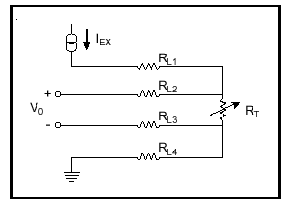
Thermometrics Serves Many Different Industries
 Thermometrics manufactures RTDs for a variety of industry applications. From single- or dual-element RTDs, to PT100's to Sanitary CIP types, Thermometrics has the right sensor for your job. If what you need is not available from our company catalog, our product engineers and sales staff will design an RTD for your specific application, including temperature sensor assemblies that require connection heads, thermowells and/or transmitters.
Thermometrics manufactures RTDs for a variety of industry applications. From single- or dual-element RTDs, to PT100's to Sanitary CIP types, Thermometrics has the right sensor for your job. If what you need is not available from our company catalog, our product engineers and sales staff will design an RTD for your specific application, including temperature sensor assemblies that require connection heads, thermowells and/or transmitters.What is a Resistor in an RTD?
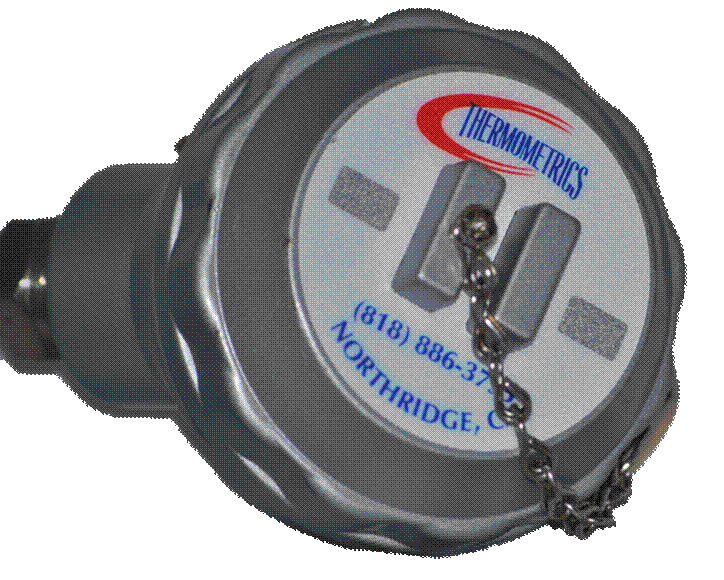 A Resistor is a two-terminal electronic component that produces a voltage across its terminals that is proportional to the electric current passing through it in accordance with OHM's law.
A Resistor is a two-terminal electronic component that produces a voltage across its terminals that is proportional to the electric current passing through it in accordance with OHM's law.
The primary characteristic of a resistor are the resistance, the tolerance, maximum volatage and the power rating. Other characteristics include temperature coefficient, noise, and inductance.
Thermometrics News
 August 10, 2010
August 10, 2010
Thermometrics now has the ability to offer customers wireless temperature monitoring and data logging systems.
